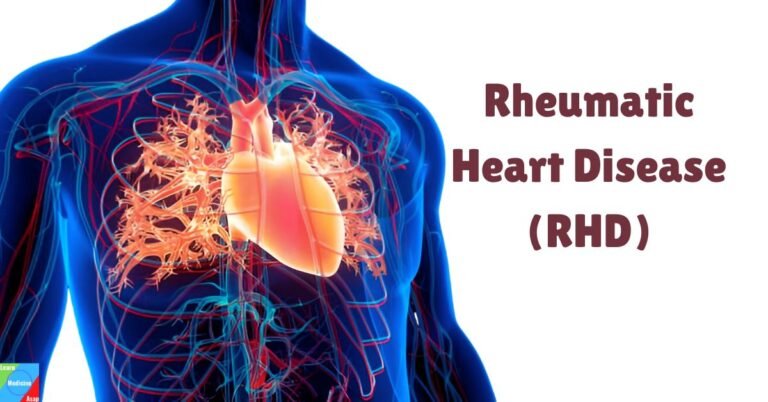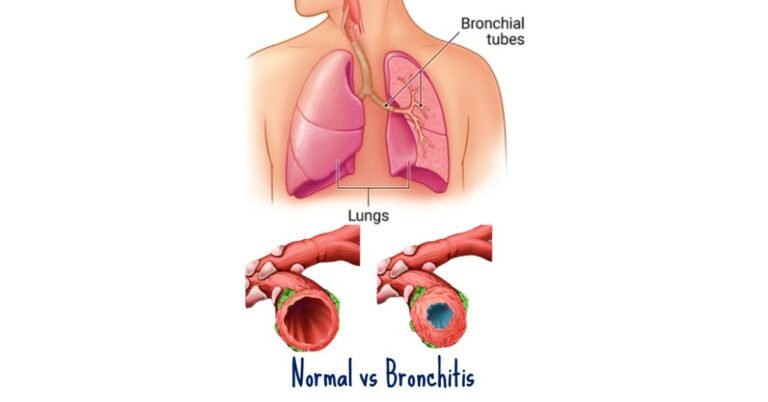Causes | Symptoms | Diagnosis | Treatment | Complications | Prevention | Takeaway | FAQs
Fibromyalgia is a chronic condition characterized by widespread pain, fatigue, and tenderness in muscles, ligaments, and tendons. Despite its prevalence, fibromyalgia remains poorly understood, and its exact cause is not fully known.
What is fibromyalgia?
Fibromyalgia is a complex chronic pain condition characterized by widespread musculoskeletal pain, tenderness, fatigue, and often accompanied by sleep, memory, and mood issues. The exact cause of fibromyalgia is still not fully understood, but it is believed to involve a combination of genetic, environmental, psychological, and neurobiological factors.
What causes fibromyalgia?
The exact cause of fibromyalgia remains unclear and is believed to be multifactorial, involving a combination of genetic, environmental, physiological, and psychological factors. While researchers have made significant strides in understanding the condition, there is still much to learn about its underlying mechanisms.
- Genetic factors: There is evidence to suggest that genetics play a role in fibromyalgia. Studies have shown that individuals with a family history of fibromyalgia are more likely to develop the condition themselves, indicating a genetic predisposition. However, no single gene has been identified as the sole cause of fibromyalgia, suggesting that it likely involves multiple genetic factors.
- Neurochemical imbalances: Researchers believe that abnormalities in the central nervous system, particularly in the way the brain processes pain signals, may contribute to fibromyalgia. Neurotransmitters such as serotonin, norepinephrine, and dopamine, which are involved in regulating pain perception, mood, and stress response, may be dysregulated in individuals with fibromyalgia. Dysfunction in the body’s pain processing pathways could lead to heightened sensitivity to pain and other sensory stimuli.
- Abnormal pain processing: One theory suggests that fibromyalgia may involve an amplification of pain signals within the central nervous system, leading to increased sensitivity to pain and tenderness. This phenomenon, known as central sensitization, may result from alterations in the way the brain and spinal cord process and transmit pain signals. Factors such as chronic stress, trauma, and repetitive injuries may contribute to the development of central sensitization in individuals with fibromyalgia.
- Hormonal imbalances: Hormonal fluctuations, particularly changes in levels of stress hormones like cortisol and reproductive hormones like estrogen, have been implicated in fibromyalgia. Many women experience an onset or worsening of symptoms during hormonal transitions such as menopause or menstruation, suggesting a hormonal influence on the condition. Additionally, thyroid dysfunction and abnormalities in the hypothalamic-pituitary-adrenal (HPA) axis, which regulates the body’s stress response, may also play a role in fibromyalgia.
- Psychological factors: While fibromyalgia is not considered a purely psychological condition, psychological factors such as stress, trauma, anxiety, and depression can exacerbate symptoms and contribute to the onset of fibromyalgia in susceptible individuals. Chronic stress, in particular, may trigger changes in the body’s neuroendocrine system and immune function, predisposing individuals to fibromyalgia.
- Environmental triggers: Certain environmental factors, such as infections, physical trauma, or exposure to toxins, may act as triggers for fibromyalgia in some individuals. Infections such as viral or bacterial illnesses have been associated with the onset of fibromyalgia symptoms in some cases, suggesting a potential role of the immune system in the development of the condition.
What are the symptoms of fibromyalgia?
While the primary symptom of fibromyalgia is widespread musculoskeletal pain, individuals may experience a constellation of other symptoms that significantly impact their quality of life.

- Widespread pain: The hallmark symptom of fibromyalgia is chronic, widespread pain that affects muscles, ligaments, and tendons throughout the body. This pain is often described as dull, aching, burning, or stabbing and may fluctuate in intensity. It typically affects both sides of the body and can migrate to different areas over time.
- Tenderness: Individuals with fibromyalgia often experience increased sensitivity to pressure, known as tender points or tender spots. These tender points are specific areas on the body, typically located around joints, where even light pressure can cause discomfort. While the concept of tender points has evolved in recent years, they are no longer a strict criterion for diagnosing fibromyalgia according to updated guidelines.
- Fatigue: Chronic fatigue is a common symptom of fibromyalgia and can be overwhelming, even after restful sleep. Individuals may wake up feeling unrefreshed and experience persistent tiredness throughout the day, which can interfere with daily activities and exacerbate other symptoms.
- Sleep disturbances: Many people with fibromyalgia experience sleep disturbances, including difficulty falling asleep, staying asleep, or non-restorative sleep. Sleep disorders such as insomnia, sleep apnea, or restless leg syndrome may coexist with fibromyalgia and contribute to fatigue and daytime sleepiness.
- Cognitive dysfunction: Cognitive difficulties, often referred to as “fibro fog,” are common in fibromyalgia. This can manifest as problems with concentration, memory, attention, and processing information. Individuals may experience difficulty finding words, organizing thoughts, or completing tasks, which can impair work, school, and daily functioning.
- Stiffness: Many individuals with fibromyalgia experience stiffness, particularly in the morning or after periods of inactivity. This stiffness can affect mobility and range of motion in joints, making it difficult to perform daily activities or engage in physical exercise.
- Headaches: Recurrent headaches, including tension-type headaches and migraines, are prevalent among individuals with fibromyalgia. These headaches may be triggered or exacerbated by stress, fatigue, muscle tension, or changes in weather.
- Sensitivity to stimuli: Heightened sensitivity to sensory stimuli, such as light, noise, temperature, and certain textures or odors, is common in fibromyalgia. This heightened sensitivity, known as sensory amplification, can exacerbate pain and discomfort and may contribute to sensory overload in some individuals.
- Other symptoms: Fibromyalgia can also present with a variety of other symptoms, including irritable bowel syndrome (IBS), temporomandibular joint disorder (TMJ), numbness or tingling in extremities, dizziness, chest pain, and mood disturbances such as anxiety and depression.
How is fibromyalgia diagnosed?
Diagnosing fibromyalgia can be challenging due to its diverse and overlapping symptoms, as well as the absence of specific diagnostic tests. Healthcare providers typically rely on a combination of medical history, physical examination, and exclusion of other conditions with similar symptoms to make a diagnosis.
Medical history: A thorough medical history is essential for identifying symptoms and their impact on daily functioning. Healthcare providers will inquire about the nature, location, intensity, and duration of pain, as well as any associated symptoms such as fatigue, sleep disturbances, cognitive difficulties, and mood changes. Patients may also be asked about any past medical conditions, injuries, surgeries, or traumatic events that could contribute to their symptoms.
Physical examination: During a physical examination, healthcare providers will assess for signs of tenderness, stiffness, and other physical findings consistent with fibromyalgia. Historically, tender points were used as a diagnostic criterion for fibromyalgia, with specific sites on the body being assessed for tenderness. However, tender points are no longer considered essential for diagnosis according to updated guidelines, as they may not always be present or reliably reproducible.
Diagnostic criteria: The American College of Rheumatology (ACR) has established diagnostic criteria for fibromyalgia, which include widespread pain lasting for at least three months and the presence of tenderness in at least 11 of 18 designated tender points on the body. However, it’s important to note that these criteria are not always applied in clinical practice, particularly since tender points may not accurately reflect the severity of symptoms or the extent of pain sensitivity experienced by individuals with fibromyalgia.
Exclusion of other conditions: Since fibromyalgia shares symptoms with many other medical conditions, healthcare providers must rule out other possible causes of symptoms before making a diagnosis. Conditions such as rheumatoid arthritis, lupus, hypothyroidism, and multiple sclerosis can mimic fibromyalgia and may require specific diagnostic tests, such as blood tests, imaging studies, or other laboratory investigations, to differentiate.
How is fibromyalgia treated?
Treating fibromyalgia often involves a multidisciplinary approach aimed at managing symptoms, improving quality of life, and promoting overall well-being. Since fibromyalgia is a complex and chronic condition with diverse symptoms, treatment strategies may vary from person to person and typically involve a combination of medication, lifestyle modifications, and complementary therapies.
Medications:
- Pain relievers: Over-the-counter pain relievers such as acetaminophen (Tylenol) or nonsteroidal anti-inflammatory drugs (NSAIDs) like ibuprofen (Advil, Motrin) may provide some relief from mild to moderate pain associated with fibromyalgia.
- Antidepressants: Certain antidepressant medications, such as duloxetine (Cymbalta) and milnacipran (Savella), are FDA-approved for treating fibromyalgia. These medications can help reduce pain, improve sleep quality, and alleviate symptoms of depression and anxiety.
- Anticonvulsants: Some anticonvulsant medications, such as pregabalin (Lyrica) and gabapentin (Neurontin), may be prescribed to help relieve nerve-related pain and decrease sensitivity to pain stimuli.
- Muscle relaxants: Muscle relaxants like cyclobenzaprine (Flexeril) may be used to alleviate muscle spasms and promote relaxation, particularly for individuals experiencing muscle stiffness and tension.
Lifestyle modifications:
- Regular exercise: Low-impact exercises such as walking, swimming, cycling, and gentle stretching can help improve muscle strength, flexibility, and overall fitness while reducing pain and stiffness. Exercise programs tailored to individual needs and capabilities are recommended to avoid exacerbating symptoms.
- Stress management: Stress reduction techniques such as relaxation exercises, deep breathing, meditation, yoga, and mindfulness-based stress reduction (MBSR) can help alleviate stress and promote relaxation, which may in turn help reduce fibromyalgia symptoms.
- Healthy sleep habits: Establishing a regular sleep schedule, practicing good sleep hygiene, and creating a comfortable sleep environment can improve sleep quality and reduce fatigue in individuals with fibromyalgia. Avoiding caffeine, alcohol, and electronic devices before bedtime may also help promote better sleep.
- Balanced diet: Eating nutritious and well-balanced diet rich in fruits, vegetables, whole grains, lean proteins, and healthy fats can support overall health and energy levels. Some individuals with fibromyalgia may benefit from dietary modifications, such as avoiding certain trigger foods or supplements like magnesium or vitamin D, although evidence supporting specific dietary interventions is limited.
Complementary therapies:
- Physical therapy: Physical therapy techniques such as massage, heat therapy, cold therapy, hydrotherapy, and gentle exercise programs prescribed by a physical therapist can help reduce pain, improve mobility, and enhance physical functioning in individuals with fibromyalgia.
- Acupuncture: Acupuncture, a traditional Chinese medicine technique involving the insertion of thin needles into specific points on the body, may provide relief from pain, stiffness, and other fibromyalgia symptoms for some individuals.
- Mind-body therapies: Mind-body approaches such as cognitive-behavioral therapy (CBT), biofeedback, guided imagery, and relaxation techniques can help individuals with fibromyalgia cope with stress, manage pain, and improve emotional well-being by changing negative thought patterns and behaviors.
Supportive care:
- Education and support: Providing education about fibromyalgia, connecting with support groups, and seeking support from family, friends, and healthcare providers can help individuals with fibromyalgia better understand their condition, cope with challenges, and access resources for managing symptoms and improving quality of life.
What are the complications of fibromyalgia?
While fibromyalgia itself does not typically lead to life-threatening complications, it can contribute to various complications that affect overall quality of life and functional ability.
- Decreased quality of life: Chronic pain, fatigue, and other symptoms of fibromyalgia can significantly impair quality of life by limiting physical activity, interfering with sleep, and disrupting daily functioning. Individuals with fibromyalgia may experience reduced productivity at work or school, limitations in performing household tasks, and difficulties participating in social and recreational activities.
- Sleep disorders: Many people with fibromyalgia experience sleep disturbances, including difficulty falling asleep, staying asleep, or non-restorative sleep. Poor sleep quality can exacerbate fatigue, pain, and other fibromyalgia symptoms, creating a vicious cycle of sleep disruption and symptom exacerbation.
- Mental health disorders: Fibromyalgia is often associated with an increased risk of mood disorders such as depression and anxiety. Chronic pain, fatigue, and the impact of fibromyalgia on daily life can contribute to feelings of hopelessness, frustration, and social isolation, which may exacerbate underlying mental health conditions.
- Physical deconditioning: Due to pain, fatigue, and reduced physical activity, individuals with fibromyalgia may experience deconditioning of muscles, decreased flexibility, and loss of aerobic fitness over time. Physical deconditioning can further contribute to functional limitations, decreased mobility, and increased susceptibility to injuries or musculoskeletal problems.
- Cognitive dysfunction: Cognitive difficulties, often referred to as “fibro fog,” are common in fibromyalgia and can impact memory, concentration, attention, and processing speed. Cognitive dysfunction may affect academic or work performance, impair decision-making abilities, and increase the risk of accidents or errors.
- Social isolation: Living with fibromyalgia can be socially isolating, as individuals may struggle to maintain social connections, participate in social activities, or engage in hobbies and interests due to pain, fatigue, or other symptoms. Social isolation can contribute to feelings of loneliness, depression, and decreased quality of life.
- Financial strain: Managing fibromyalgia may involve significant healthcare costs associated with medical appointments, medications, therapies, and supportive care. Additionally, individuals with fibromyalgia may experience reduced earning potential or work disability due to limitations in physical or cognitive functioning, leading to financial strain and economic hardship.
- Polypharmacy: The management of fibromyalgia often involves the use of multiple medications to address pain, sleep disturbances, mood disorders, and other symptoms. Polypharmacy, or the simultaneous use of multiple medications, can increase the risk of drug interactions, adverse effects, and medication non-adherence, complicating treatment and management of fibromyalgia.
- Increased healthcare utilization: Individuals with fibromyalgia may require frequent medical visits, consultations with specialists, diagnostic tests, and therapeutic interventions to manage their symptoms effectively. Increased healthcare utilization can be burdensome for patients and healthcare systems alike, leading to higher healthcare costs and resource allocation.
How is fibromyalgia prevented?
Preventing fibromyalgia entirely is challenging because the exact cause of the condition is not fully understood and likely involves a combination of genetic, environmental, physiological, and psychological factors. However, there are strategies that individuals can adopt to reduce their risk of developing fibromyalgia or minimize the severity of symptoms if they are already experiencing them. Here are some potential preventive measures:
Maintain a healthy lifestyle: Adopting healthy lifestyle habits can support overall physical and mental well-being, potentially reducing the risk of developing fibromyalgia or mitigating its impact. This includes:
- Eating a balanced diet rich in fruits, vegetables, whole grains, lean proteins, and healthy fats to support immune function, energy levels, and overall health.
- Engaging in regular physical activity, such as aerobic exercise, strength training, and flexibility exercises, to promote cardiovascular health, muscle strength, and mobility.
- Getting an adequate amount of sleep each night (7-9 hours for adults) and practicing good sleep hygiene habits to support restful sleep and optimize recovery.
Manage stress: Chronic stress can exacerbate symptoms of fibromyalgia and contribute to its development. Practicing stress management techniques such as mindfulness meditation, deep breathing exercises, progressive muscle relaxation, yoga, tai chi, or guided imagery can help reduce stress levels and promote relaxation.
Address mental health: Mental health disorders such as depression and anxiety are common comorbidities of fibromyalgia. Seeking treatment for mental health concerns, such as therapy, counseling, or medication, if necessary, can help improve mood, coping skills, and overall well-being.
Avoid overexertion and injury: Physical trauma or overexertion can potentially trigger or exacerbate fibromyalgia symptoms in susceptible individuals. It’s important to listen to your body, pace yourself, and avoid pushing beyond your limits to prevent injury and minimize the risk of symptom flare-ups.
Maintain a healthy work-life balance: Balancing work, personal life, and leisure activities can help prevent burnout and reduce stress levels, which may in turn help manage fibromyalgia symptoms. Setting realistic goals, prioritizing tasks, and establishing boundaries can promote overall well-being and reduce the risk of symptom exacerbation.
Stay connected: Maintaining social connections and seeking support from family, friends, and support groups can provide emotional support, reduce feelings of isolation, and improve coping with fibromyalgia. Building a strong support network can help individuals navigate the challenges of living with chronic pain and promote overall resilience.
Listen to your body: Pay attention to your body’s signals and respond appropriately to signs of discomfort, fatigue, or stress. Taking breaks when needed, practicing self-care, and seeking medical attention for persistent symptoms can help prevent exacerbation of fibromyalgia symptoms and promote early intervention and management.
Takeaway
Fibromyalgia is a chronic condition characterized by widespread pain, fatigue, and other symptoms that can significantly impact a person’s quality of life. Although the exact cause of fibromyalgia remains unknown, various treatment options are available to manage symptoms and improve overall well-being.
FAQs
Q: What is fibromyalgia?
A: Fibromyalgia is a chronic condition characterized by widespread musculoskeletal pain, fatigue, sleep disturbances, cognitive difficulties, and other symptoms.
Q: What are the common symptoms of fibromyalgia?
A: Common symptoms of fibromyalgia include widespread pain, tenderness, fatigue, sleep disturbances, cognitive dysfunction (“fibro fog”), headaches, and sensitivity to sensory stimuli.
Q: How is fibromyalgia diagnosed?
A: Fibromyalgia is diagnosed based on medical history, physical examination, exclusion of other conditions, and meeting certain diagnostic criteria, such as widespread pain and tender points.
Q: What causes fibromyalgia?
A: The exact cause of fibromyalgia is unknown, but it is believed to involve a combination of genetic, environmental, physiological, and psychological factors.
Q: What are the treatment options for fibromyalgia?
A: Treatment for fibromyalgia often involves a multidisciplinary approach including medication, lifestyle modifications, physical therapy, exercise, stress management techniques, and complementary therapies.
Q: Can fibromyalgia be cured?
A: There is no cure for fibromyalgia, but with proper management and treatment, many individuals are able to effectively manage their symptoms and improve their quality of life.
Q: What lifestyle changes can help manage fibromyalgia symptoms?
A: Lifestyle changes such as maintaining a healthy diet, regular exercise, stress management, adequate sleep, and avoiding overexertion can help manage fibromyalgia symptoms.
Q: Are there any complications associated with fibromyalgia?
A: While fibromyalgia itself may not lead to life-threatening complications, it can contribute to decreased quality of life, mental health disorders, sleep disturbances, and physical deconditioning.
Q: How can I support a loved one with fibromyalgia?
A: Supporting a loved one with fibromyalgia involves providing understanding, empathy, and practical support, such as helping with household tasks, accompanying them to medical appointments, and offering emotional support.
Q: Is fibromyalgia a rare condition?
A: Fibromyalgia is not considered rare, as it affects an estimated 2-8% of the global population, with higher prevalence among women than men.
References
- Wolfe, Frederick, et al. “The American College of Rheumatology 1990 Criteria for the Classification of Fibromyalgia: Report of the Multicenter Criteria Committee.” Arthritis & Rheumatism: Official Journal of the American College of Rheumatology 33.2 (1990): 160-172. Link
- Häuser, W., Ablin, J., Fitzcharles, M. A., Littlejohn, G., Luciano, J. V., Usui, C., & Walitt, B. (2015). Fibromyalgia. Nature Reviews Disease Primers, 1, 15022. doi:10.1038/nrdp.2015.22
- Wolfe, F., Clauw, D. J., Fitzcharles, M. A., Goldenberg, D. L., Katz, R. S., Mease, P.,… Yunus, M. B. (2010). The American College of Rheumatology preliminary diagnostic criteria for fibromyalgia and measurement of symptom severity. Arthritis Care & Research, 62(5), 600-610. doi:10.1002/acr.20140
- Arnold, Lesley M., et al. “Patient perspectives on the impact of fibromyalgia.” Patient education and counseling 64.1-3 (2006): 10-21.
- Fitzcharles, M. A., Ste-Marie, P. A., Goldenberg, D. L., Pereira, J. X., Abbey, S., Choinière, M. Yunus, M. B. (2013). 2012 Canadian Guidelines for the diagnosis and management of fibromyalgia syndrome: Executive summary. Pain Research and Management, 18(3), 119-126. doi:10.1155/2013/918216



